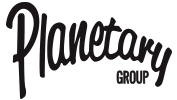Overview of Commercial Specialty Radio
Error: Contact form not found.
For many new and emerging artists, commercial radio isn’t quite the right home. As we’ve discussed at length in our overview of commercial radio vs. non-commercial radio, ad-driven commercial radio has a tendency to fixate on income over innovation. Meanwhile in the world of non-commercial and college radio, stations are free from the financial pressures that steer their commercial counterparts, meaning it’s much easier for unheard-of and offbeat artists to find a foothold. In a nutshell, commercial radio is a “no,” while non-commercial radio is a resounding “yes!”
But, there are exceptions to every rule. In the case of commercial radio, that exception is the specialty show.
In this overview of commercial specialty radio, we’ll talk about:
- What makes commercial specialty shows so “special.”
- Why commercial specialty shows are relevant to up-and-comers.
- Which commercial specialty charts you should be keeping an eye on.
What is Commercial Specialty Radio?
Just like TV shows, radio stations break down their schedules into a few basic parts. In the A.M. hours, there’s morning radio for the commuters, usually featuring news, interviews, sports, and talk shows. Once the morning shows wrap up, the bulk of the day is devoted to music and, to an even greater extent, advertising. This is radio’s equivalent of “prime time.” Finally, late at night you’ll find the evening shows, which tend to feature electronic remixes and “deep cuts.”
Commercial specialty radio simply refers to any show on a commercial station which features material outside of the station norm. Most commercial stations allot one or two hours each week for specialty shows. During these specialty shows, the host has free reign to play tracks that wouldn’t or couldn’t normally get rotation.
Translation: songs by independent, new, and/or unsigned artists.
Normally, these songs wouldn’t see the light of day on a commercial station, because they simply don’t drive the profits that commercial stations need to maintain. However, thanks to the extra flexibility afforded by the specialty format, artists who would normally be ignored by commercial stations finally get that coveted chance to be heard.
Of course, with only one or two hours devoted to specialty shows every week, the competition for artists is fierce. If you want to make it onto a commercial specialty slot, an aggressive promo team can make the difference between an audience and obscurity.
K.K.B.B. and the SubModern Report
There are two major charts you need to be watching where commercial specialty radio is concerned:
- U.N.C.L.E. Promo’s K.K.B.B. Chart
- FMQB’s SubModern Report Chart
U.N.C.L.E. Promo and K.K.B.B.
The U.N.C.L.E. in U.N.C.L.E. Promo stands for Underground Network Committed to Lifeline of Entertainment. K.K.B.B. stands for Kiss Kiss Bang Bang, an e-zine’s whose self-described mission is to keep “alternative and specialty safe and united for a better tomorrow.” Kiss Kiss Bang Bang, which is published by U.N.C.L.E., takes full advantage of its digital format by offering site visitors free music downloads, a weekly review of the latest releases, and most importantly, the K.K.B.B. Tracker Chart.
The K.K.B.B. Tracker Chart is available to “industry folks with an interest in key tracking” — that’s you — after you register and pay a fee. (For information about registration and payment, you’ll have to shoot an inquiry over to the email contact provided on the K.K.B.B. site.) Purchasing access to K.K.B.B. is well worth the minor investment, because it will allow you to track the rise and fall of other new artists being featured on commercial specialty shows. Once you’re armed with a subscription to this information, you can really start to get a sense of what works where, and how your act fits in.

Image from www.kkbbezine.com
FMQB and SubModern
Here’s another acronym for you to memorize: FMQB. Short for Friday Morning QuarterBack, FMQB boasts an impressive history dating all the way back to 1968. Since then, FMQB has made the transition from print to digital, and over the years, FMQB has claimed its own set of landmark specialty radio charts. Among these charts, one of the most important is the SubModern Charts.
Simply put, the SubModern Charts track commercial specialty shows. While commercial specialty shows are always the source, SubModern consists of several individual charts, including:
- SubModern Singles
- SubModern Albums
- Daily Top 20 SubModern Album Sales
SubModern Singles includes the artist, track, and label, while SubModern Albums notes the artist, album, and label. Best of all, these three handy charts are available for free at the click of a button — no fees or registration required.
In addition to the SubModern Charts, FMQB also writes up an accompaniment called the SubModern Report. The SubModern Report recaps chart content, talks about the relevant artists and albums, and any events or festivals which FMQB may be involved with in the near future.
Commercial radio may be a difficult if not impossible venue for brand new acts, but thanks to commercial specialty radio, you have a chance to break in.


